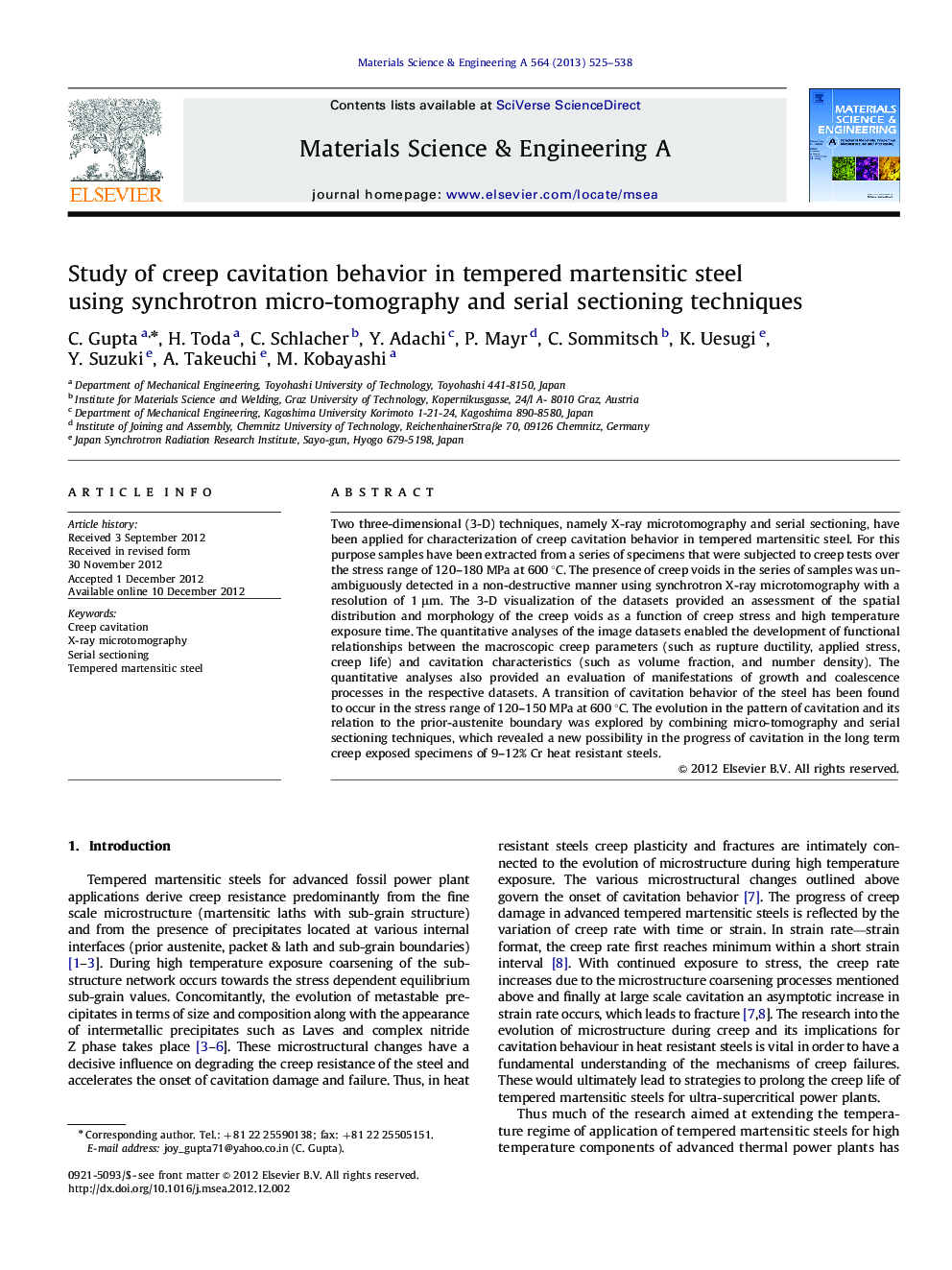| Article ID | Journal | Published Year | Pages | File Type |
|---|---|---|---|---|
| 7983577 | Materials Science and Engineering: A | 2013 | 14 Pages |
Abstract
Two three-dimensional (3-D) techniques, namely X-ray microtomography and serial sectioning, have been applied for characterization of creep cavitation behavior in tempered martensitic steel. For this purpose samples have been extracted from a series of specimens that were subjected to creep tests over the stress range of 120-180 MPa at 600 °C. The presence of creep voids in the series of samples was un-ambiguously detected in a non-destructive manner using synchrotron X-ray microtomography with a resolution of 1 μm. The 3-D visualization of the datasets provided an assessment of the spatial distribution and morphology of the creep voids as a function of creep stress and high temperature exposure time. The quantitative analyses of the image datasets enabled the development of functional relationships between the macroscopic creep parameters (such as rupture ductility, applied stress, creep life) and cavitation characteristics (such as volume fraction, and number density). The quantitative analyses also provided an evaluation of manifestations of growth and coalescence processes in the respective datasets. A transition of cavitation behavior of the steel has been found to occur in the stress range of 120-150 MPa at 600 °C. The evolution in the pattern of cavitation and its relation to the prior-austenite boundary was explored by combining micro-tomography and serial sectioning techniques, which revealed a new possibility in the progress of cavitation in the long term creep exposed specimens of 9-12% Cr heat resistant steels.
Related Topics
Physical Sciences and Engineering
Materials Science
Materials Science (General)
Authors
C. Gupta, H. Toda, C. Schlacher, Y. Adachi, P. Mayr, C. Sommitsch, K. Uesugi, Y. Suzuki, A. Takeuchi, M. Kobayashi,
